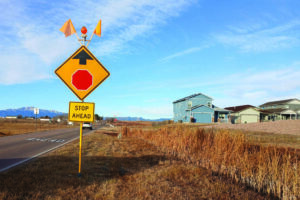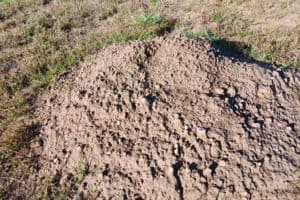As I write this, a (very) late spring storm has dumped 8 inches or so of snow in my neighborhood.Normally when we have snow, I shovel the snow that piles up on the concrete pathway in front of our house onto our front lawn; why water concrete when I can water grass?This time, though, I’m not bothering. Because this time, the front lawn is fake.One of the things that attracted us to our little house on the prairie the first time we saw it nearly 10 years ago was the small, but lush, front lawn. Amid the wide-open prairie, it was a patch of green that reminded us of our home in town.That patch of green deteriorated, however, to the point that we replaced it with new sod four years or so ago. It was a grand, lush carpet again for a couple of summers; but, for whatever reason ó insufficient watering, poor soil conditions, needles from the pine trees on each side ó the lawn deteriorated again.We didn’t want to lose our patch of green ó the space is about 14 feet by 24 feet ó but we didn’t want to keep fighting what seemed to be a losing battle. Nor did we want to keep using the water from our well to maintain the lawn.So, this spring we turned to the idea of artificial grass. We looked at various options but ended up buying a brand called SYNLawn, pulled off a roll bar at Lowe’s and cut to our specifications.While you don’t “plant” artificial grass, there are steps in installing it. We started by tilling the area and removing any dead grass, then smoothing the area.That smoothing step is not as easy as it sounds. After my first attempt and then stretching out the grass, the resulting lawn was a series of random mounds. My second attempt ó more tilling, more raking, using a hand tamp to smooth ó was not perfect, but close enough.There are a lot of recommendations online about what to place under the artificial grass. First, a weed barrier is suggested. That should be followed by a layer of sand or other base material. SYNLawn recommends “a 2-to-4-inch layer of crushed aggregate until achieving the desired shape and contour. Work the aggregate with a rake and hand tamp until the surface is compact and smooth.”We put our artificial turf directly on the tilled, smoothed dirt; after spending the money on the fake grass, we were reluctant to order and pay for a delivery of base material, too. That decision could prove to be foolish, but it’s not irrevocable. We can always roll the grass back up (after removing the pins we used to keep it down) and start over if need be.There’s one other step to consider: the placement of infill on the artificial grass. The infill weighs the turf down and also, as it is placed between the blades or fibers, helps the grass blades to stand upright, and the lawn to look more natural. Silica sand is commonly recommended; we had trouble finding it, though, and it can get quite expensive. We also looked into Envirofill; it’s “an acrylic-coated round sand infused with Microban antimicrobial production technology for protection against bacteria, mold and mildew growth that can cause stains and odors.” Itís also crazy expensive; for the proper coverage, it would have cost us as much as the grass itself.We went with what Don’s Garden Shop & Landscape Materials calls concrete sand. Or, to be precise, we went with a 40-pound sample of the sand and worked it into one section of the grass. The effect to our untrained eyes, though, was minimal, so at least for now we’re holding off on using infill on the whole lawn.One infill I later discovered is called HydroChill. As I found out after trying to rest on the grass one afternoon, artificial grass can get quite hot in the direct sun. Penn State found the surface temperature on some synthetic turf reaches as high as 170 degrees under hot, sunny conditions. (The ironic thing is we rejected the idea of replacing our front lawn with rock because we feared that would be too hot.)HydroChill is designed to help your artificial lawn chill out. Once it is added to synthetic turf, it will hold moisture from rain or a spray from the hose and then slowly release that moisture; the resulting evaporating cooling lessens the lawn surface temperature. One drawback: The HydroChill is supposed to be reapplied every two years.How long does artificial grass last? Anywhere from 15 to 25 years, according to artificialgrassliquidators.com. The only maintenance SYNLawn calls for is periodic brushing with a landscape rake or broom along with a quick spray of water regularly to eliminate dust and pollen; there are other steps to take to avoid damage in high-traffic areas or to deal with stains. Removal of leaves and other debris will also aid longevity.I’m looking forward to a bright, green lawn year-round and hoping the shortcuts I took donít result in a misshapen mess. The water we’re saving by not watering the front lawn will go to our garden.May snowstorm aside, if this drought continues, maybe I should start looking for artificial trees. There’s a 6-foot apple tree on wayfair.com for a mere $1,799.99. For that price, I would expect it to provide an unending supply of apple juice or something.





